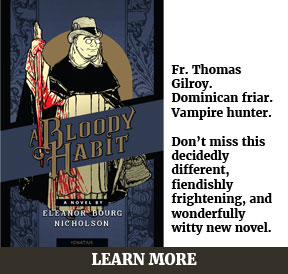I’m still in Canada, visiting family and friends and preparing for the University of Toronto launch of Ceremony of Innocence at my beloved Crux Discount Theological Books (Feb 24, 4:30 PM). I had a wonderful weekend in the French Canadian countryside, and now I am back in Toronto, cultural capital of English Canada.
While in Quebec, I had the opportunity to see some wonderfully bright and vigorous paintings by Belgian-born Françoise Pêtre and to speak with her about them. And this morning I went to the Art Gallery of Ontario to see a special exhibit of paintings on loan from the Guggenheim and then old friends in the permanent collection.
I’m not a naturally visual writer; I used to skip over long passages of description in novels to get to the parts the interested me most: the dialogue and the plot. Today I mourn over my high school diaries, for although I wrote down what people did and said in the ’80s, I didn’t write much about what we and our surroundings looked like. Perhaps I thought photographs would record all that. Ha!
As an adult, I have taught myself to notice details and to write them down. And the great schools of vision are the art galleries. Everyone who wants to infuse their writing with life and colour should go to their local art galleries.
Ah! Colour. Notice that I have spelled the word with a “U”. This is because I am Canadian, and Canadian spelling is a hybrid of British and American usage. We Canadians are very proud of our writers and artists, and as a child I was taken to the Art Gallery of Ontario on school trips to see our art. The AGO has a huge collection of the work of Henry Moore, and you could have knocked me over with an eagle feather when I discovered he was not actually a Canadian.
In fact, very few of the works I remember from childhood are Canadian. My favourite, the flame-haired Marchese Casati by Augustus John? Welsh! The terrifying green-eyed Dr. Heinrich Stadelmann? German! The mysterious, masked “Woman with Jewel”? At last, Canadian. But what strikes me most is that, of all the huge collection of the AGO, these are paintings that have stuck with me through the decades. Why them, I wonder. I suspect it was the colours: the contrast of the Marchese’s bright hair with her dark brows, the eerie three-dimensional quality of Dr. Stadelmann’s bloodshot green eyes, the Woman’s red mask and sleeves.
On this visit, I was delighted to make the acquaintance of a Canadian Catholic painter–a blatantly Catholic painter, a convert–named William Kurelek (1927-1977). Catholic readers think a lot about Catholics in the literary world; I imagine there must be even tougher challenges for Catholics in the art world. And yet Kurelek painted images like this and has an entire room in the AGO dedicated to his work.
I had never heard of Kurelek before, but I hope to learn more about him soon. Not only was he a devout Catholic, a Canadian and a colourist, he seems to have had a wonderful sense of humour. Take, for example, his painting “The Batchelor”. The subject of the work is obviously an easily distracted man. He has laid out a wounded sock for mending alongside the medicinal wool and needle, but they all lie forgotten. The subject’s right boot drips on an old issue of “The Catholic Herald”; the left is still on his foot. The subject is too absorbed in his magazine and hot drink to notice.
The AGO played host to many schoolchildren today, and I was glad to witness yet another generation of Toronto children being introduced to our wonderful art collection. Do you remember any works of art from your own childhood? What were they? And why do you think they stuck in your memory?






mikhaivergara
February 13, 2014 at 9:14 am
I remember sitting in class as a seventh grader and being told about the Group of Seven for the first time. They to this day, remain among favourite painters.
Dorothy Cummings McLean
February 13, 2014 at 9:45 am
Do you know, I heard so much about them that I was rather turned off. Rocks and trees didn’t interest me much, and I longed for stories and bold colours, so naturally I gravitated to the Pre-Raphaelites, Matisse and Kandinsky. But now that I am an expat, I really do appreciate the Group of Seven. I like the work of Lawren Harris best, alongside a painting or two by A.J. Casson.
I’m really exited by my discovery of Kurelek. Among his paintings still available for sale is one blatantly, absolutely and even graphically anti-abortion. It’s interesting that this is one painting the big public art galleries have not snapped up. I’m tempted to ask at the smaller Toronto gallery that owns it how much it costs. On the one hand, Kurelek paintings for for tens, even hundreds, of thousands. On the other, the taboo subject matter suggests that it might be “too much” for the average art collector.
mikhaivergara
February 13, 2014 at 2:00 pm
They are everywhere, absolutely, and I think that that was why I liked them! As an immigrant, they represented Canada to me, and Tom Thomson and Lawren Harris’ feel for solitude really struck a chord.
I do like the Pre-Raphaelites, and some Mattisse, what little I’ve seen of them, but I can’t say I understand Kandinsky…
I have somehow heard of Kurelek before, but have never seen his work, and I was quite shocked at the above painting that you linked to. Dark but unabashedly religious! I like it. It’s what you would get if Mumford and Sons painted. I think I will look him up more!